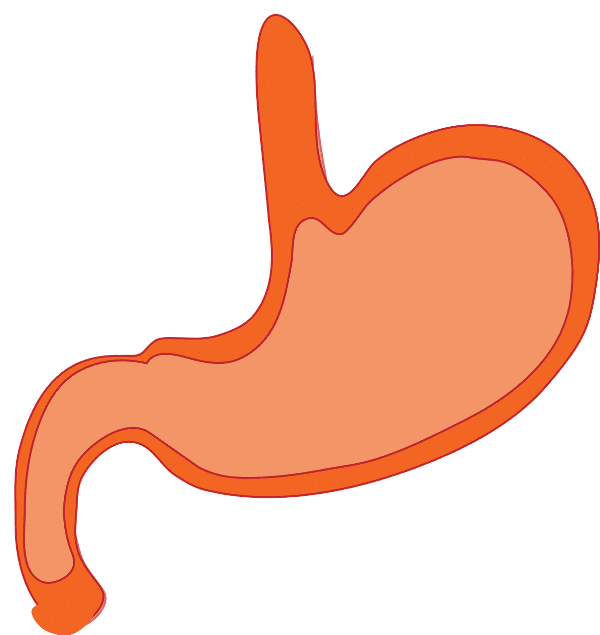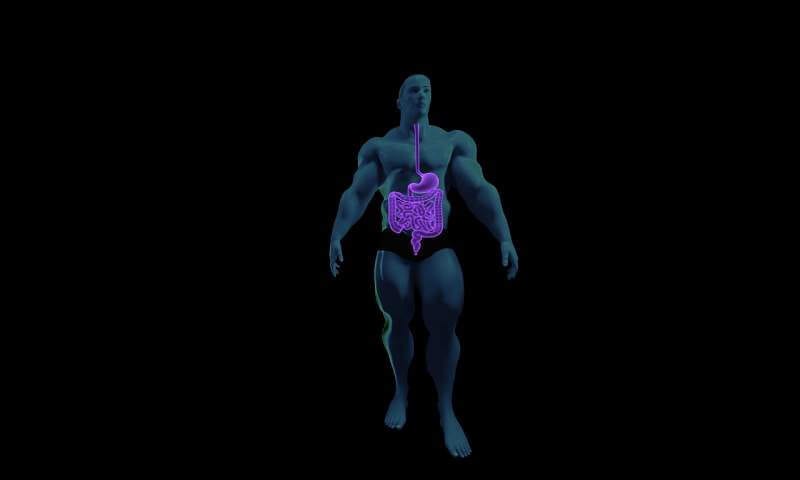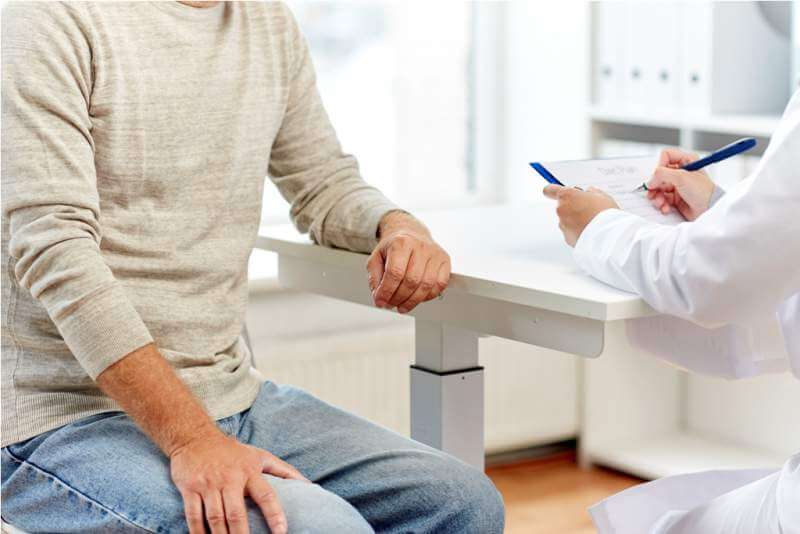You may have lived with a hiatal hernia for a long time without knowing it. A routine visit to the doctor in which you mention that you’ve recently been dealing with a lot of acid reflux could be the only trigger for running the diagnostic tests that discover the condition because most hiatal hernias are asymptomatic. But regardless of how a hiatal hernia is discovered, once you know you have one, you’ll want to know what caused it and how to address it. Read on for everything you ever wanted to know about hiatal hernias!

What is a Hernia?
 Any time an internal body part or fatty tissues pushes into surrounding muscle or fascia where it does not belong, it’s called a hernia. Hernias are usually caused by pressure (lifting something heavy, constipation or diarrhea, prolonged sneezing or coughing) combined with weakened muscle or fascia. Poor nutrition and obesity can also contribute to the propensity for hernias, as can smoking. Hiatal hernias occur most in women, especially women over the age of 50 who are overweight.
Any time an internal body part or fatty tissues pushes into surrounding muscle or fascia where it does not belong, it’s called a hernia. Hernias are usually caused by pressure (lifting something heavy, constipation or diarrhea, prolonged sneezing or coughing) combined with weakened muscle or fascia. Poor nutrition and obesity can also contribute to the propensity for hernias, as can smoking. Hiatal hernias occur most in women, especially women over the age of 50 who are overweight.
There are many different types of hernias, although the most common are hernias in the inner and outer groin, the stomach (umbilical), incisional (resulting from surgery) and hiatal. Most hernias can be treated with targeted compression to relieve symptoms and surgery, but a hiatal hernia requires different treatment.
What is a Hiatal Hernia?
 Hiatal hernias are caused by weakened muscles which allow your stomach to push up through your diaphragm. The diaphragm is a large muscle band that separates the chest cavity from the stomach. Ordinarily, the diaphragm has a small hole through which the esophagus passes called the hiatus, but in the case of a hiatal hernia, the hiatus enlarges and part of the stomach push through.
Hiatal hernias are caused by weakened muscles which allow your stomach to push up through your diaphragm. The diaphragm is a large muscle band that separates the chest cavity from the stomach. Ordinarily, the diaphragm has a small hole through which the esophagus passes called the hiatus, but in the case of a hiatal hernia, the hiatus enlarges and part of the stomach push through.
If it is a small hernia, it may never cause you problems and you may never need to address it. But if the hernia enlarges, or is big to begin with, it can cause symptoms such as excessive heartburn, shortness of breath, difficulty swallowing, pain in the chest and abdomen, regurgitation of food or liquid into the mouth, acid reflux, and in extreme cases, vomiting of blood or excretion of bloody stools.
There are two primary types of hiatal hernias: the sliding hiatal hernia and the paraesophageal hiatal hernia. The paraesophageal hiatal hernia is diagnosed less frequently but has a more serious risk. If the portion of the stomach that squeezes through the hiatus is fixed aside the esophagus, it can cause the blood flow to the stomach to be cut off. The other kind of hiatal hernia, known as a sliding hiatal hernia, is the most common and develops when a piece of the stomach and the esophagus squeeze up into the chest cavity via the hiatus. More than 95% of all hiatal hernias are of this variety.
Diagnosis and Treatment
 If your doctor suspects you have a hiatal hernia, he or she may confirm the diagnosis by having you do a barium swallow so that a radiologist can see the outlines of the esophagus, stomach, and part of the intestines. The radiologist can see the movement of the muscles used to move the barium through the esophagus and into the stomach in real time. A gastroenterologist may also perform an endoscopy in order to look at the condition of the lining of your esophagus and stomach. If you have other conditions such as GERD (gastroesophageal reflux disease), an endoscopy allows your physician to examine any complications and to conduct a biopsy if needed.
If your doctor suspects you have a hiatal hernia, he or she may confirm the diagnosis by having you do a barium swallow so that a radiologist can see the outlines of the esophagus, stomach, and part of the intestines. The radiologist can see the movement of the muscles used to move the barium through the esophagus and into the stomach in real time. A gastroenterologist may also perform an endoscopy in order to look at the condition of the lining of your esophagus and stomach. If you have other conditions such as GERD (gastroesophageal reflux disease), an endoscopy allows your physician to examine any complications and to conduct a biopsy if needed.
If your hernia was discovered during a routine doctor’s office visit and isn’t symptomatic, it is probably small and can be managed through proper self-care and over-the-counter medications such as acid neutralizers and blockers. If it is large and causing you pain and discomfort, your physician may recommend surgery.
How Can Chiropractors Help?
 Some hiatal hernia sufferers have found relief in their chiropractor’s office. The chiropractor manipulates the abdomen in such a way as to exert pressure on the stomach where it is bulging through the hiatus, resulting in reduced pressure on the vagus nerve pathway. While not a cure, this manipulation can result in a reduction in the severity of the symptoms.
Some hiatal hernia sufferers have found relief in their chiropractor’s office. The chiropractor manipulates the abdomen in such a way as to exert pressure on the stomach where it is bulging through the hiatus, resulting in reduced pressure on the vagus nerve pathway. While not a cure, this manipulation can result in a reduction in the severity of the symptoms.
Your doctor and chiropractor will also recommend dietary and lifestyle changes to address your symptoms. Avoiding the common triggers for acid reflux, like fried, fatty, or spicy foods and alcohol can help with excessive acid reflux. Stopping smoking and losing weight, mild exercise such as a walk after meals or gentle yoga, and overall stress reduction are also helpful in the management of your hiatal hernia symptoms.
Living with a Hiatal Hernia
 Some people manage their hiatal hernias through yoga and other types of stretching exercises. Although you should avoid any movement that puts pressure on your abdomen, and avoid overstretching, stretching should be part of your comprehensive plan to address your hernia symptoms. Consider hanging stretches, where you hang from a bar, and types of yoga that focus on standing balance poses and deep yogic breathing. Avoid poses such a cobra, wheel or bridge, and bow pose. As always, you should clear your participation in any kind of exercise program with your doctor before you begin. And it’s a good idea to seek out a yoga therapist or personal trainer who has experience dealing with clients who have hiatal hernias or GERD.
Some people manage their hiatal hernias through yoga and other types of stretching exercises. Although you should avoid any movement that puts pressure on your abdomen, and avoid overstretching, stretching should be part of your comprehensive plan to address your hernia symptoms. Consider hanging stretches, where you hang from a bar, and types of yoga that focus on standing balance poses and deep yogic breathing. Avoid poses such a cobra, wheel or bridge, and bow pose. As always, you should clear your participation in any kind of exercise program with your doctor before you begin. And it’s a good idea to seek out a yoga therapist or personal trainer who has experience dealing with clients who have hiatal hernias or GERD.
If you are experiencing reduced blood flow to the stomach, or if your symptoms have become unmanageable as the hernia has grown, your physician will likely recommend surgery. Most hiatal hernia repair can be done in a minimally invasive way through a few small incisions in the abdomen and using a laparoscope –a type of camera that allows the surgeon to see the internal organs, and your hernia, on a monitor. Using the small incisions, the surgeon inserts surgical tool and repairs the hernia without the risk of infection and scarring that comes with a large incision. Most people who have laparoscopic hernia repair are up and walking by the next day, and a complete recovery can be expected within two-to-three weeks. You’ll have to avoid any heavy lifting or exertion for another three months or so, and you may have a weakness for recurrence.
